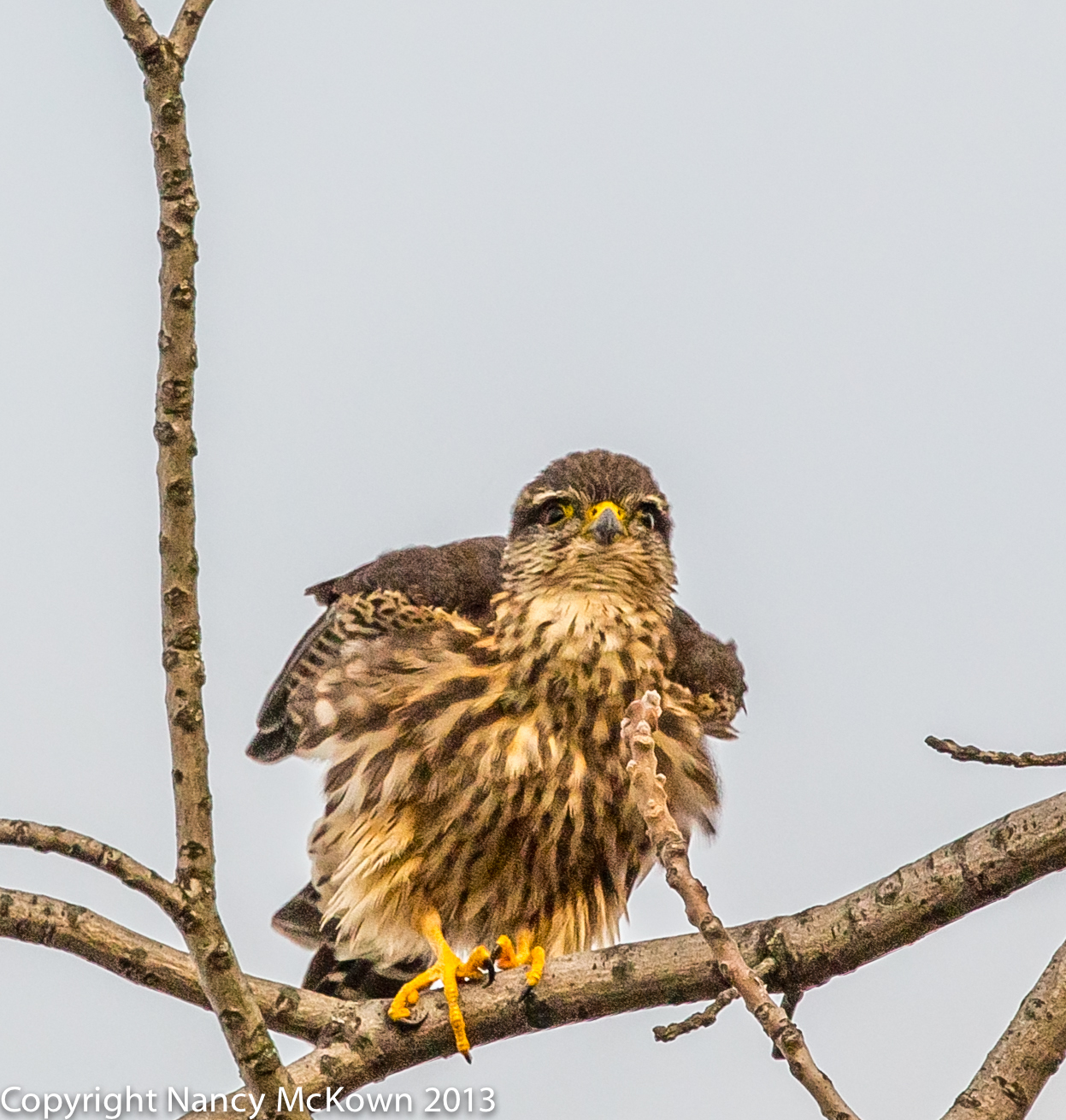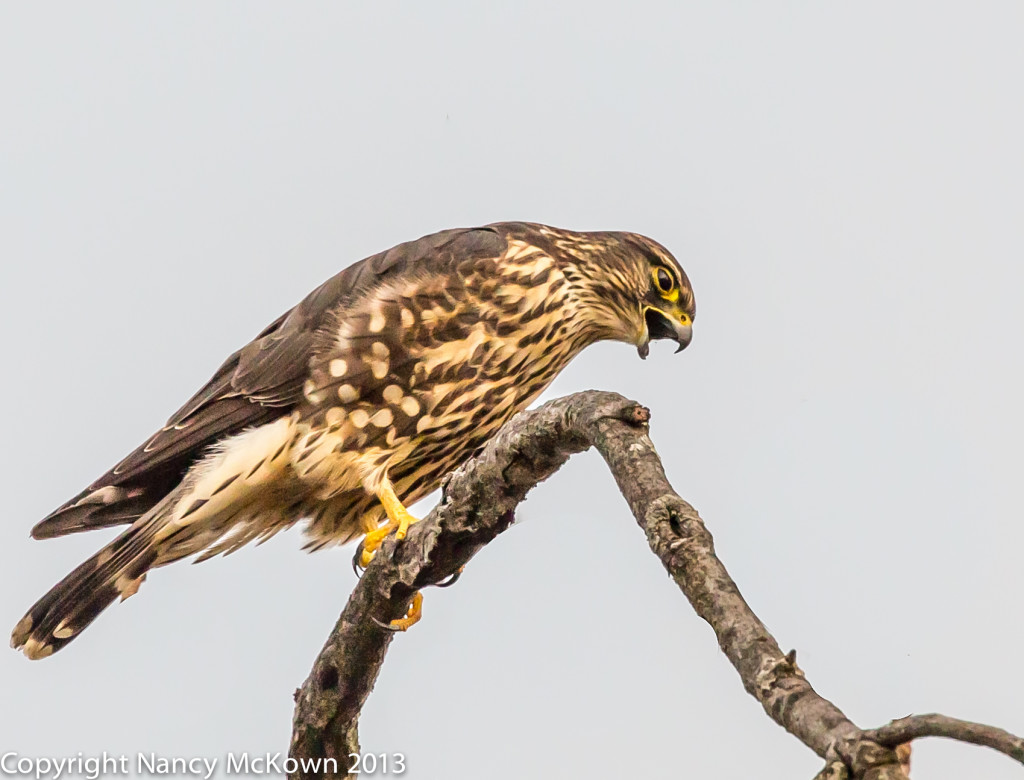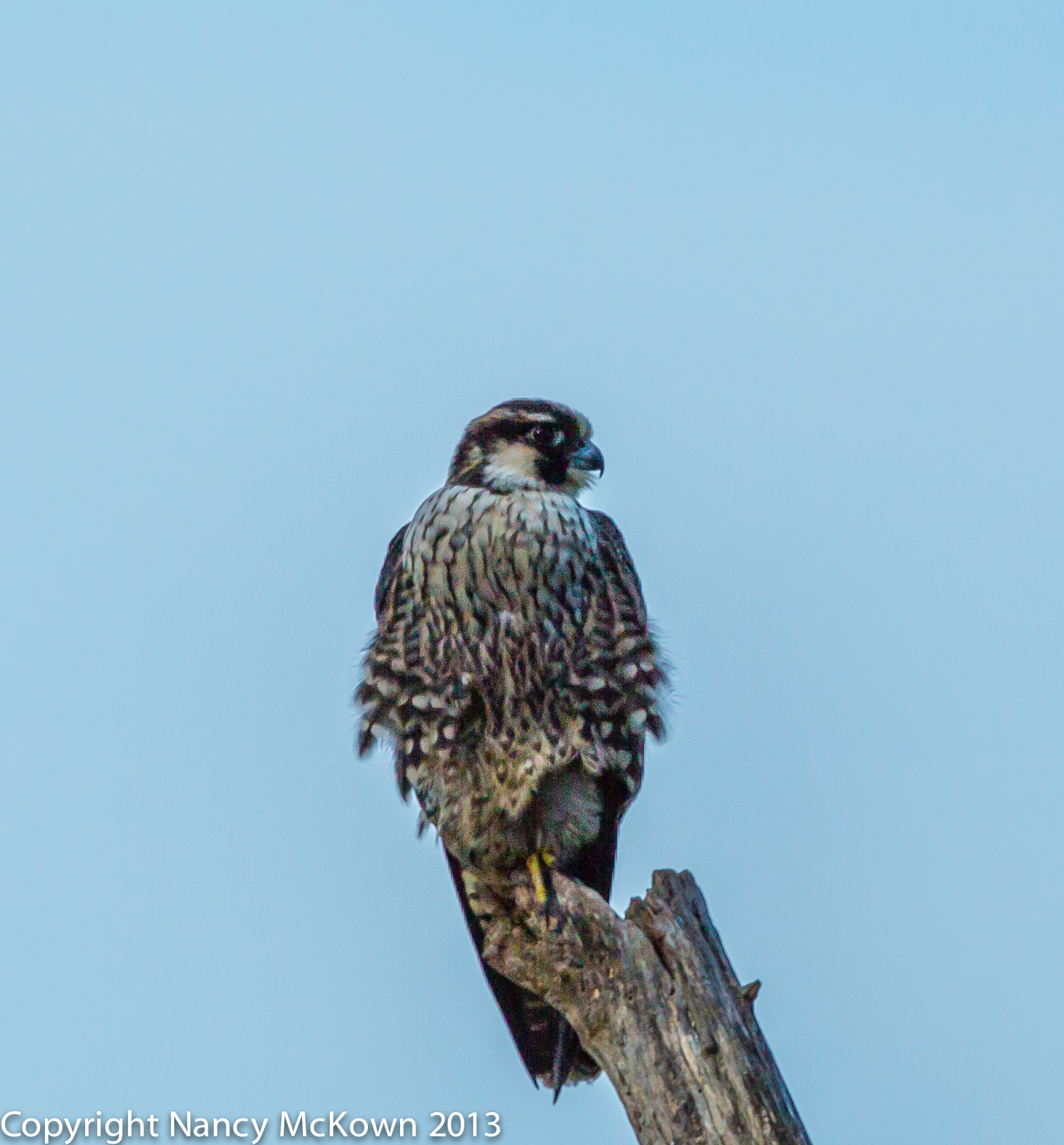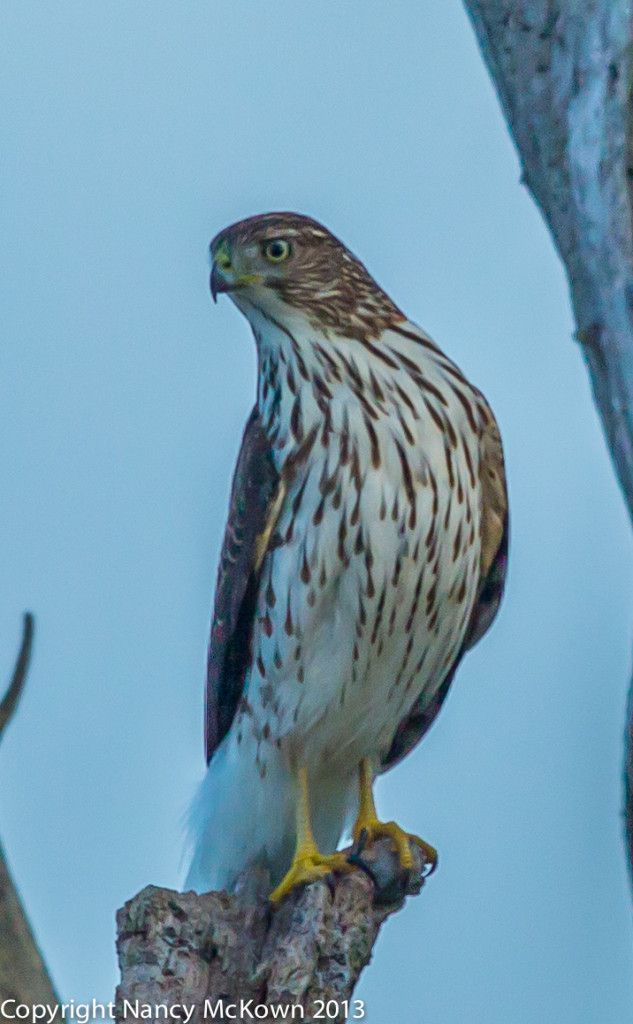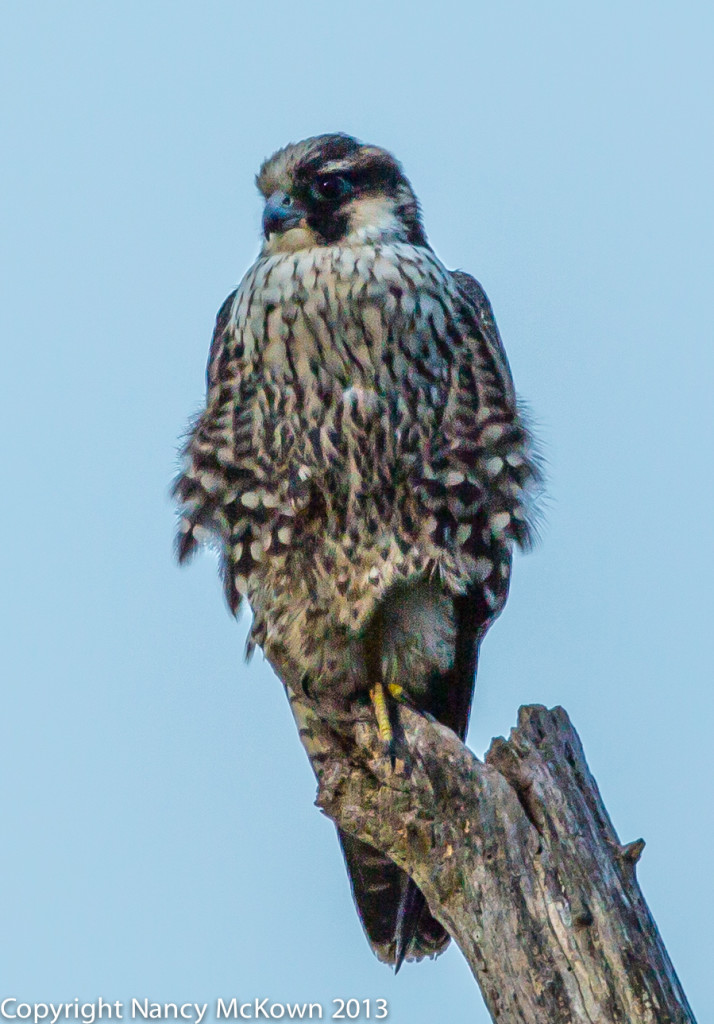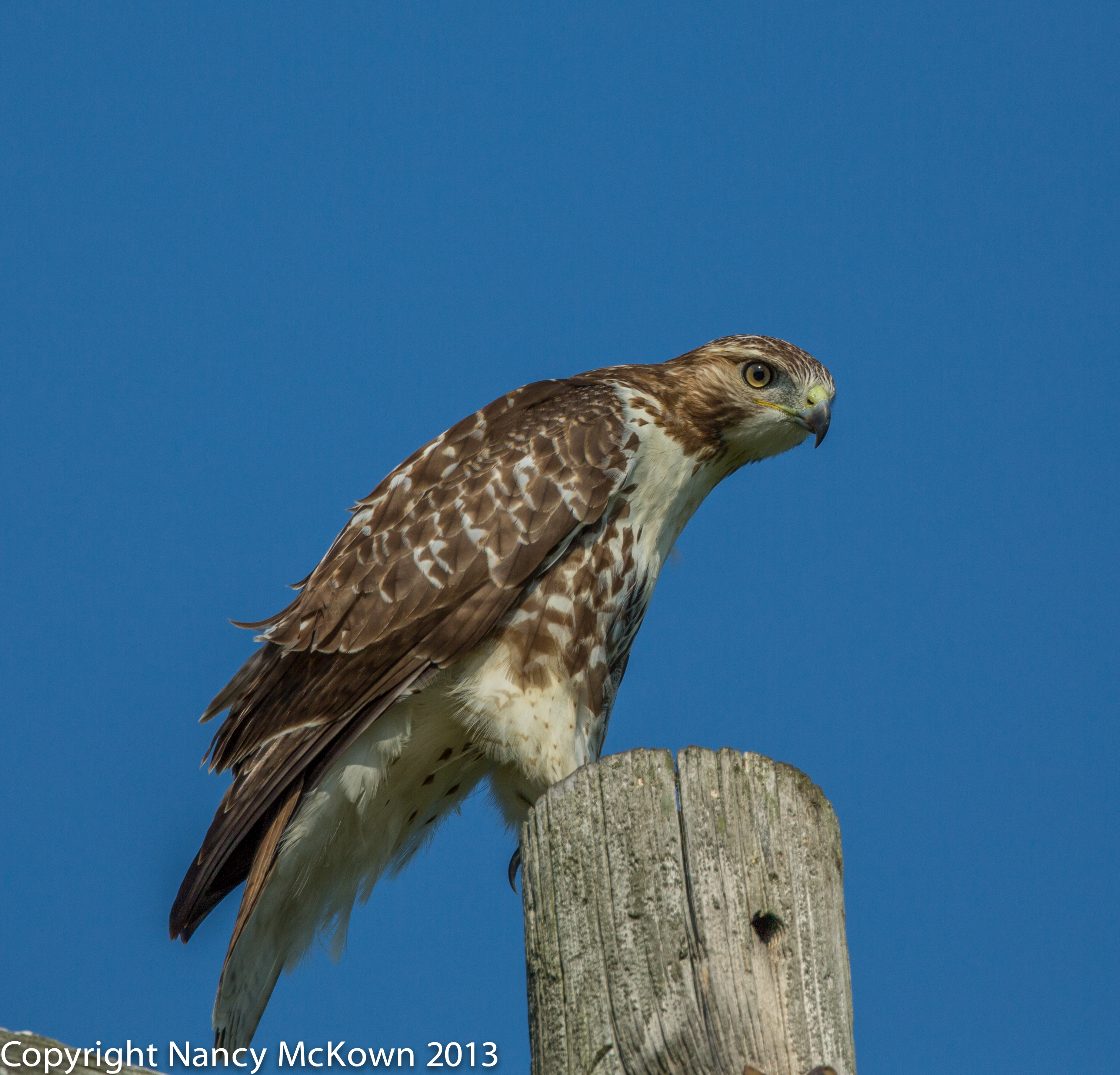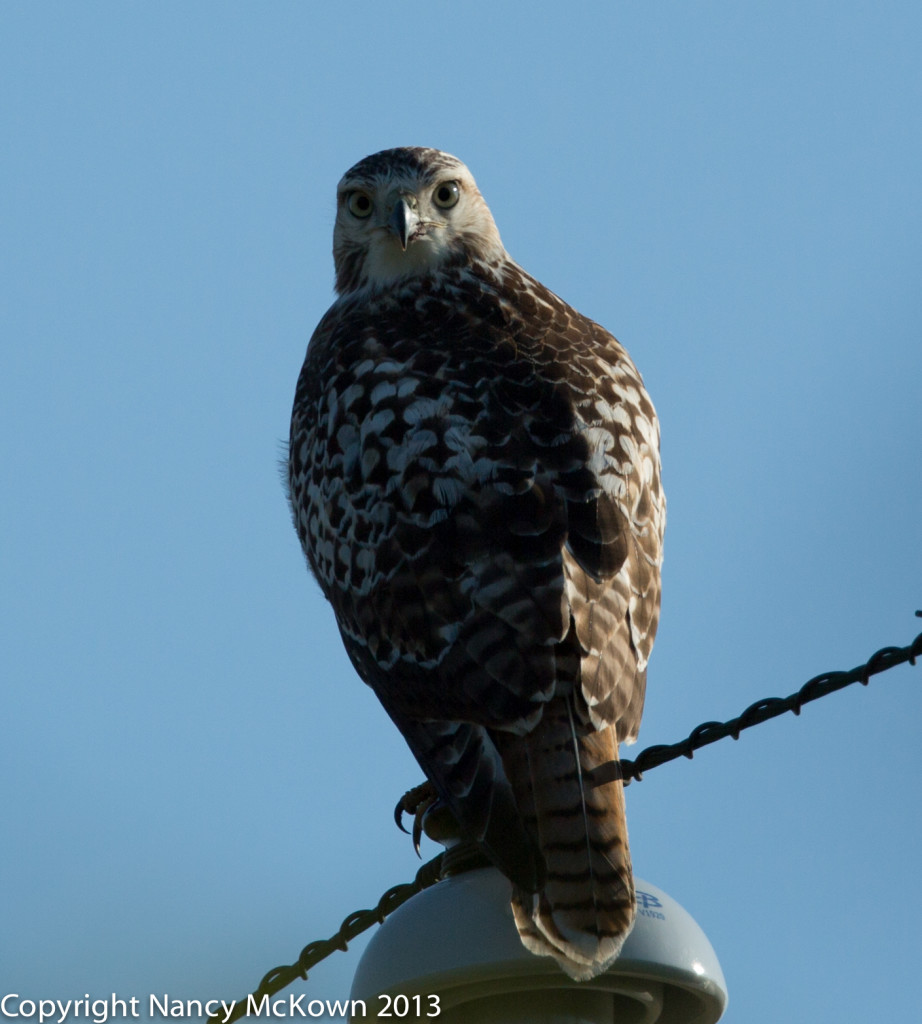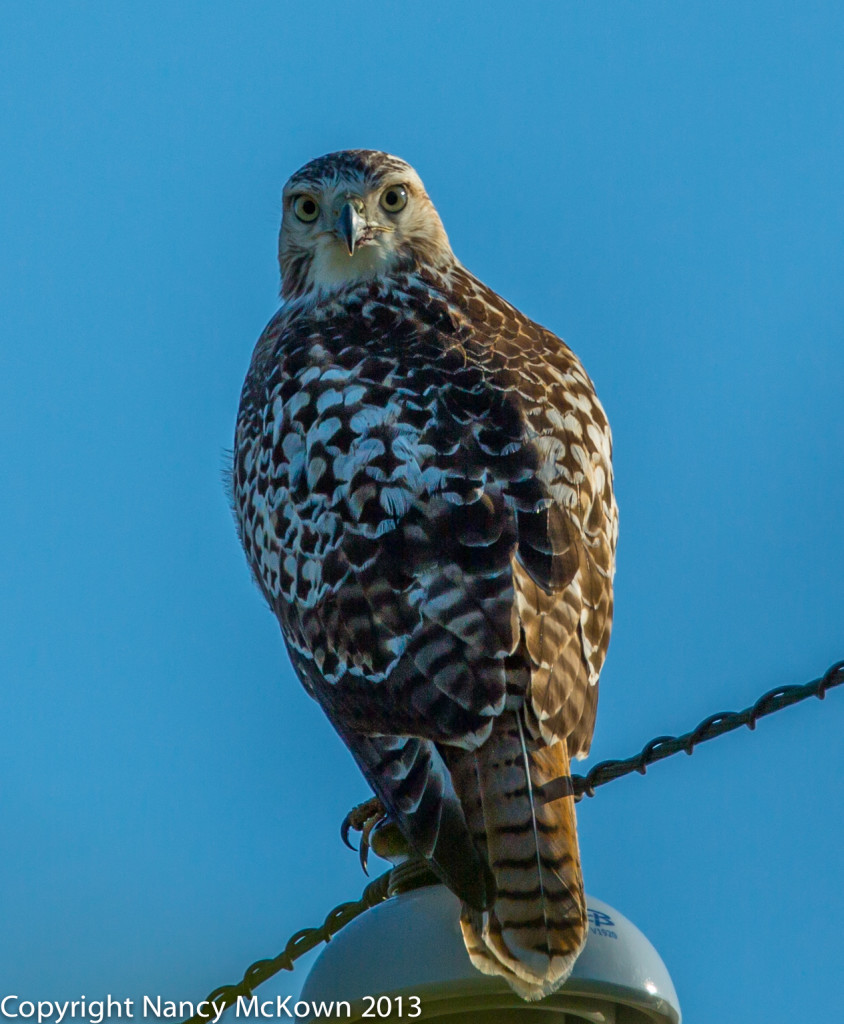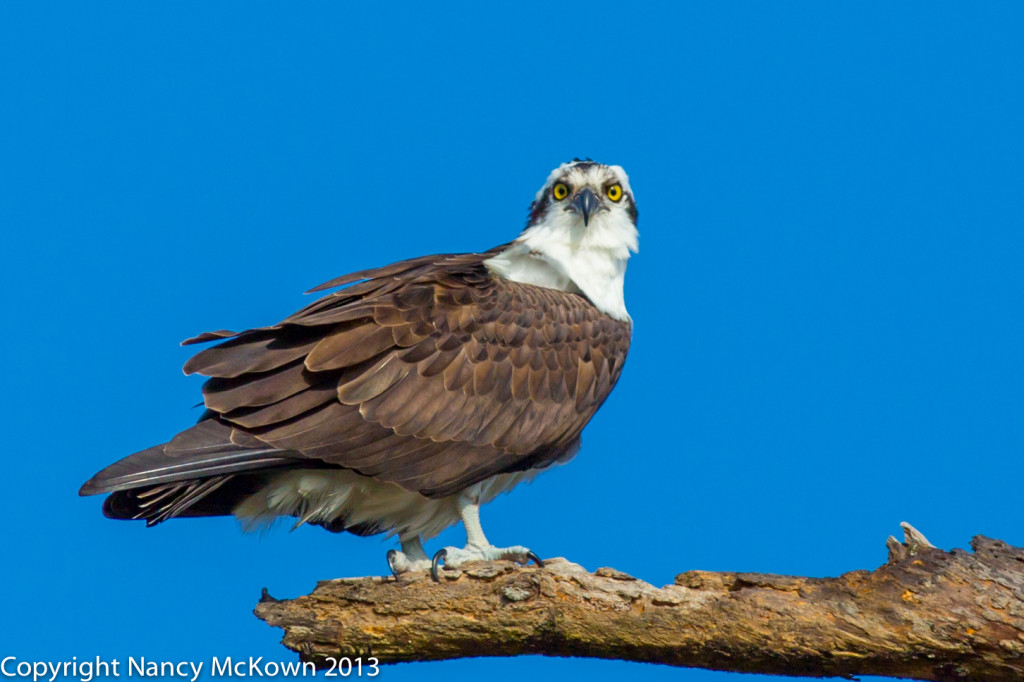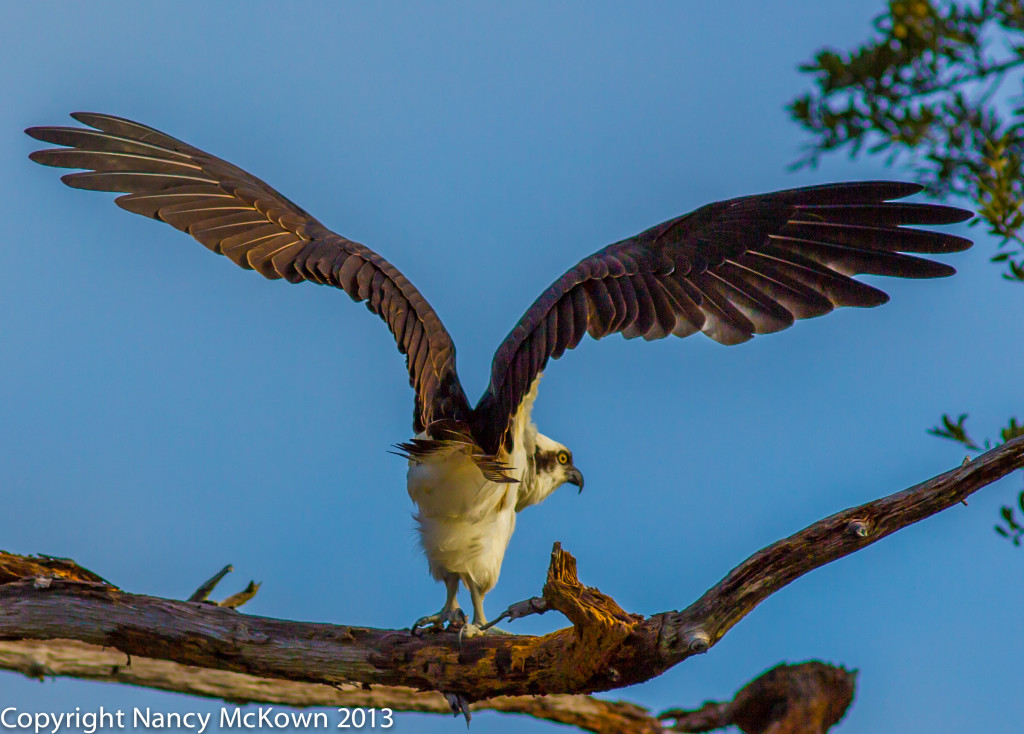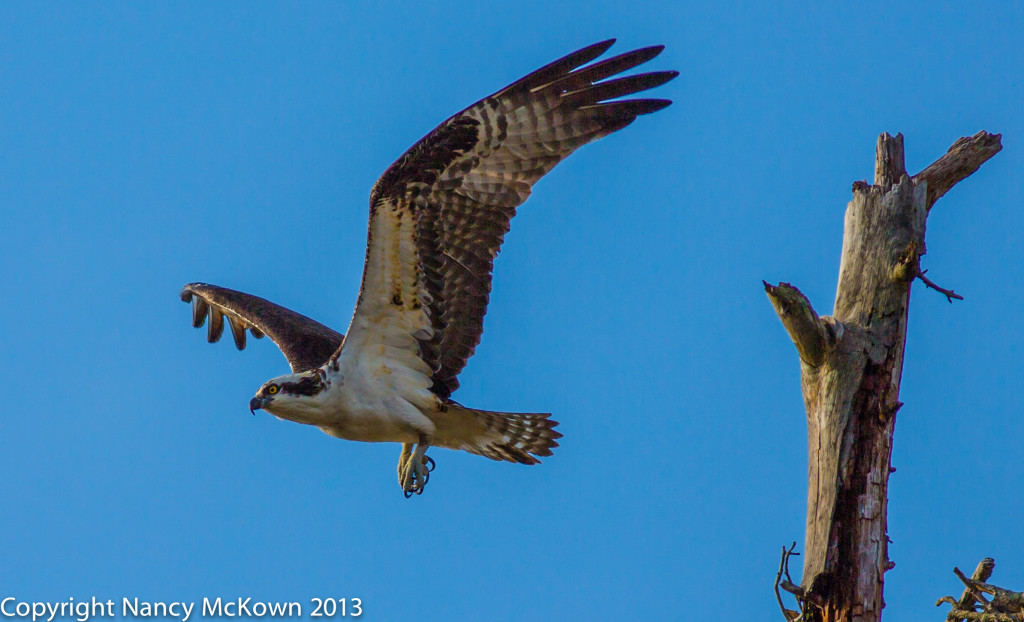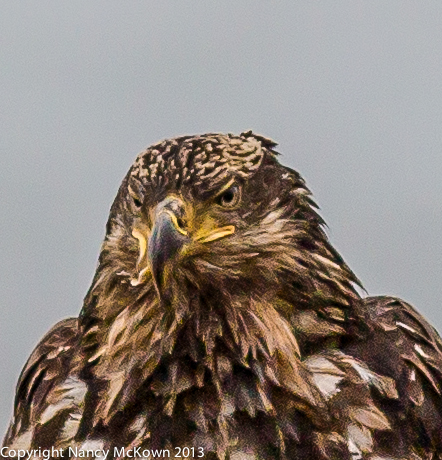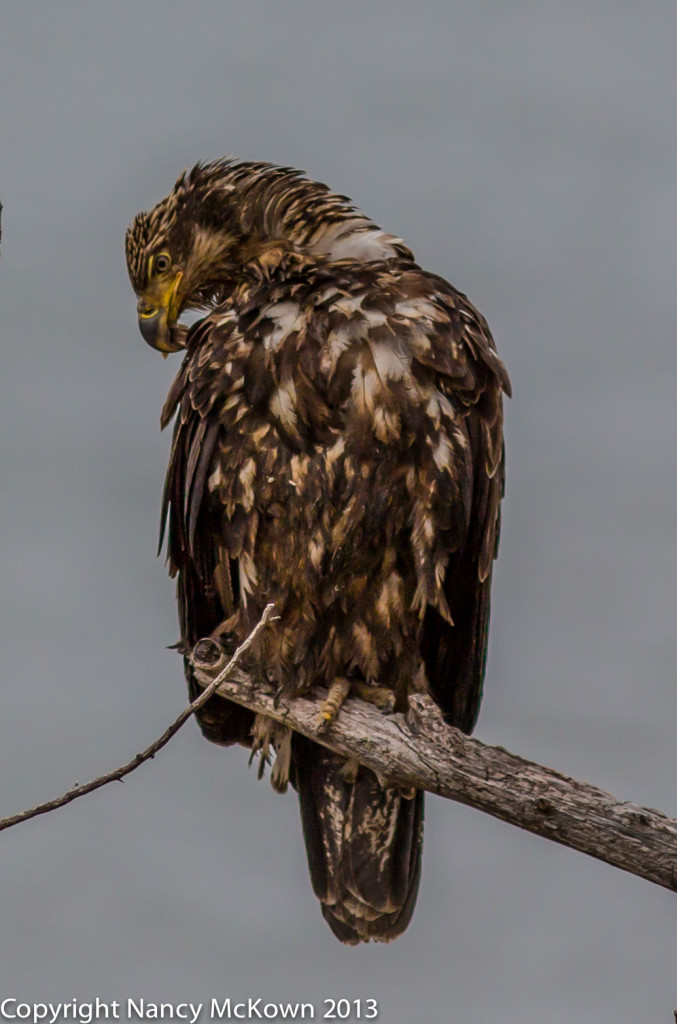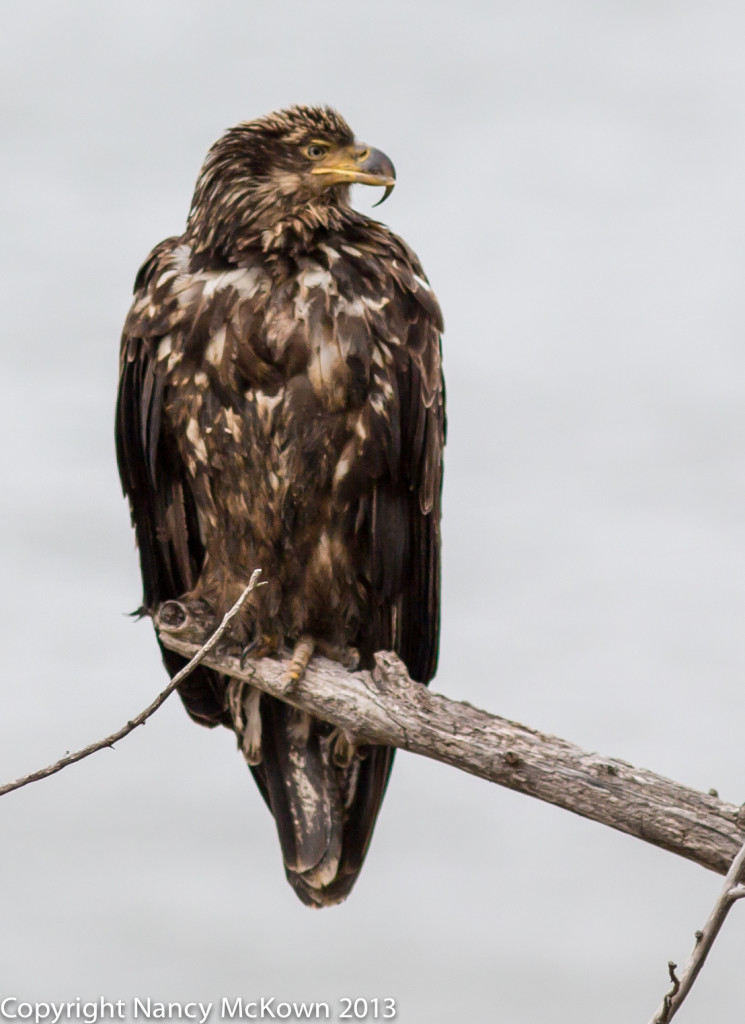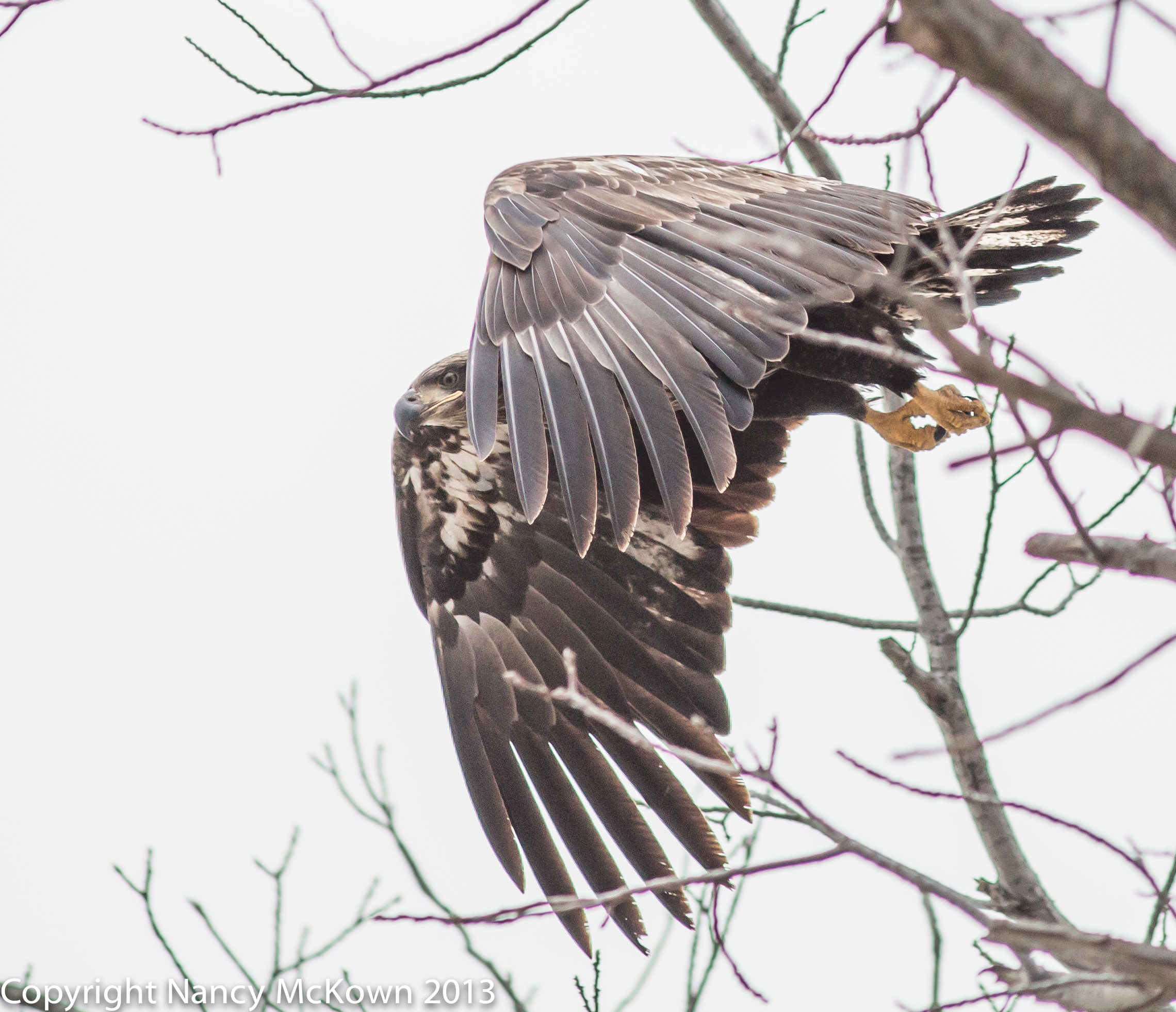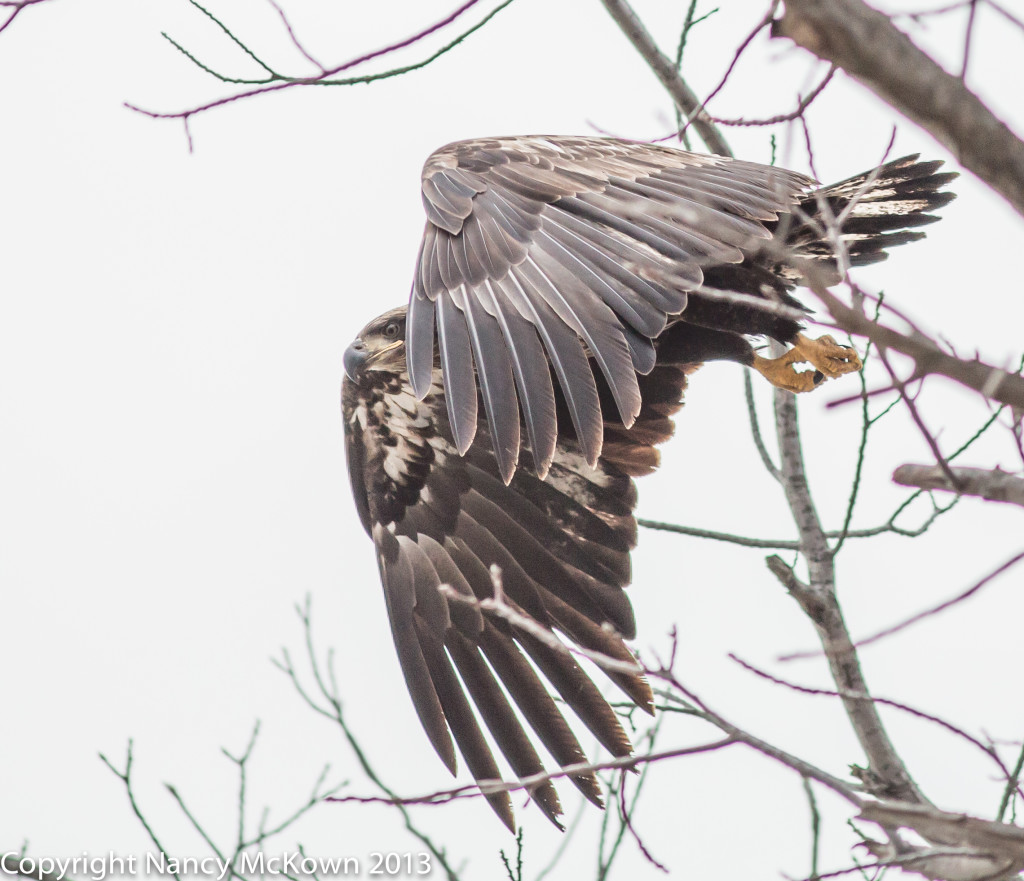My First Merlin Falcon Sighting
Merlin Falcons are elusive and generally a rare sighting for bird photographers in Michigan. These birds are listed as “threatened” on the State Of MI endangered lists. Previous to this encounter, I’ve only seen other photographers’ photos of Merlin falcons.
So, I was delighted and very excited when, from my car, I saw two Merlins sitting pretty on tree branches overhanging the road.
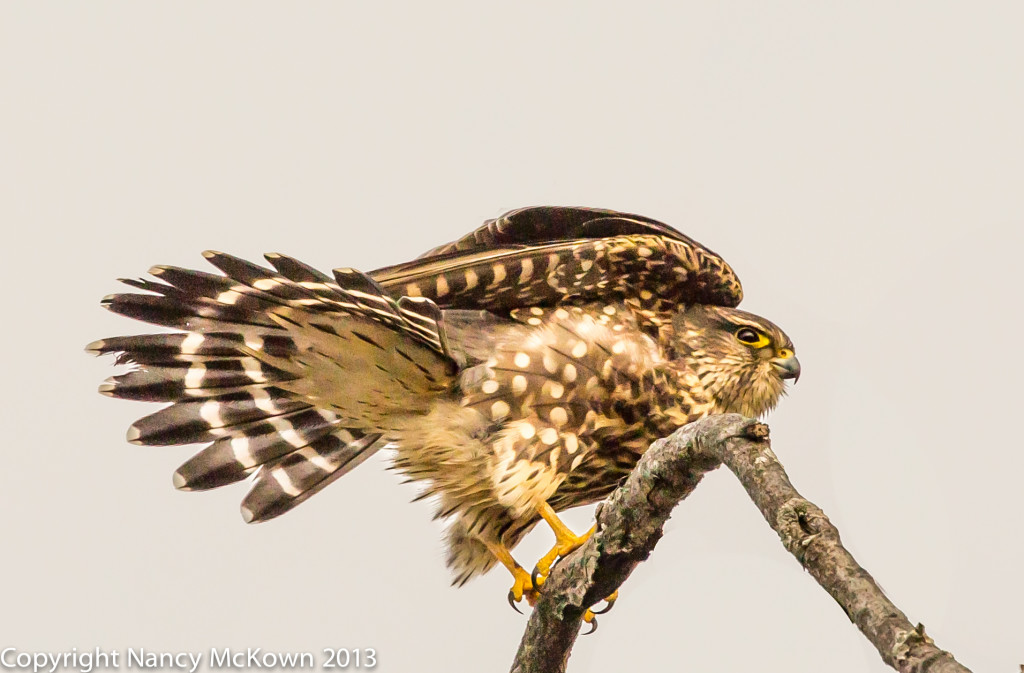
ISO 500; f/7.1; 1/2500 Second
I grabbed the camera that had been resting on the passenger seat and positioned it atop a neck pillow that I had hurriedly place on the car door window ledge. I powered it up and pointed it toward the falcons. Nothing. The camera would not autofocus; the shutter would not release. On the display, was a message: Err 01: Lens to Body Communication Error.
Aaack! Not now!
Faulty Lens to Camera Body Communication
A faulty lens to body communication error (01) is one of the most common errors with Canon DSLRs. It means that the contacts and/or the mounts between the lens and the camera or the extender and the camera are not communicating.
This error might have had something to do with how I was handling my camera and lens.
I have a 300 mm f2.8 lens that weighs more than my DSLR camera. When I am out photographing birds from my car, the camera is usually resting on the seat next to me. When I see a bird I want to photograph, I get excited and tend to grab the camera however is fastest. From a weight distribution perspective, that really isn’t a good idea.
Undue Stress on Camera Mounts
Undue stress on the mounting mechanism can be associated with two behaviors:
- The angle at which the camera is laid to rest.
- How the camera and lens are picked up.
If you pick up the camera first, and let the weight of the heavy lens hang off the camera mounts, you may get a 01 error because of undue stress or misalignment on the mounts and the contacts. Big lenses come with straps and strap holders securely fastened to the lens, not the camera. They also come equipped with tripod mounts that can be used as a handle to grab the lens and camera.Both the lens strap and the tripod mount are smart, quick ways to pick up heavy camera equipment.
So, when you’re out in the field, in your car, take a moment to think about how you laid your camera/lens to rest, and how you will pick it up to get ready to shoot. Rest the camera strategically on the car seat so that 1) the heavy lens does not put undue stress on the camera mounts, and 2) the camera is positioned to grab safely and quickly.
A Quick Fix for the Canon Err 01
Luckily, I was able to quickly fix the error by detaching the 300 mm lens. This simple procedure involves twisting the lens off while holding down the lens release button. Then I re-attached it. Communicating was restored and the camera operated normally. And, the merlin had not flown away.
Merlin Falcons Migrating South
The two merlin falcons were on Lakeshore Drive in Saugatuck Twp., most likely following the Lake Michigan shoreline on their migration journey south. Both had cream and brown feathers, probably females or juveniles. Neither bird seemed fearful, despite all the commotion in the car, and they stayed perched on the tree limb for a good 10 minutes. A godsend for an easily excitable photographer like me.
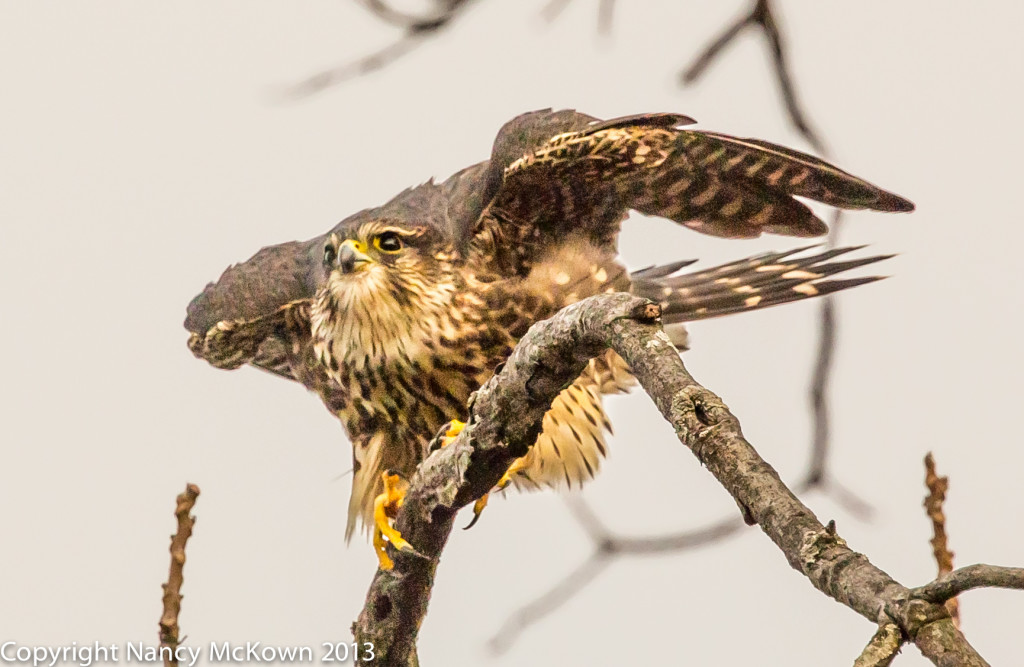
ISO 500; f7.1; 1/2500 Second
Both of the birds were perched on a dead tree and both made multiple gestures indicating they might be taking off in flight, but they did not. Sadly, when they did take off, they flew away from the camera.
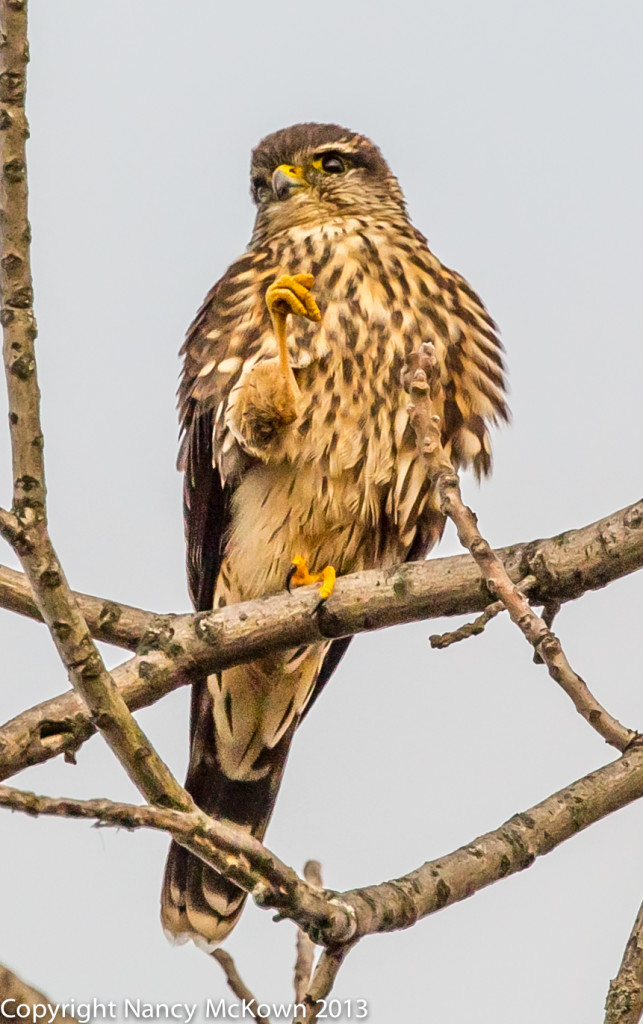
ISO 500; f/7.1; 1/2500 Second
Photographing Rarely Seen Birds
One of the best things about photographing birds is coming across a rarely sighted bird that is close enough and is not immediately flying off. The last thing you want to happen is have your equipment fail. I was lucky that my Err 01 error was easy to remedy.
I have always handled my photographic equipment gingerly, but now I will pay more attention to how the weight distribution impacts the connecting electronics.
